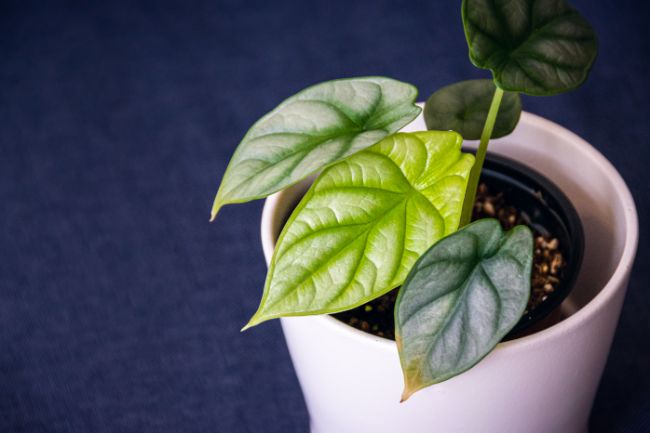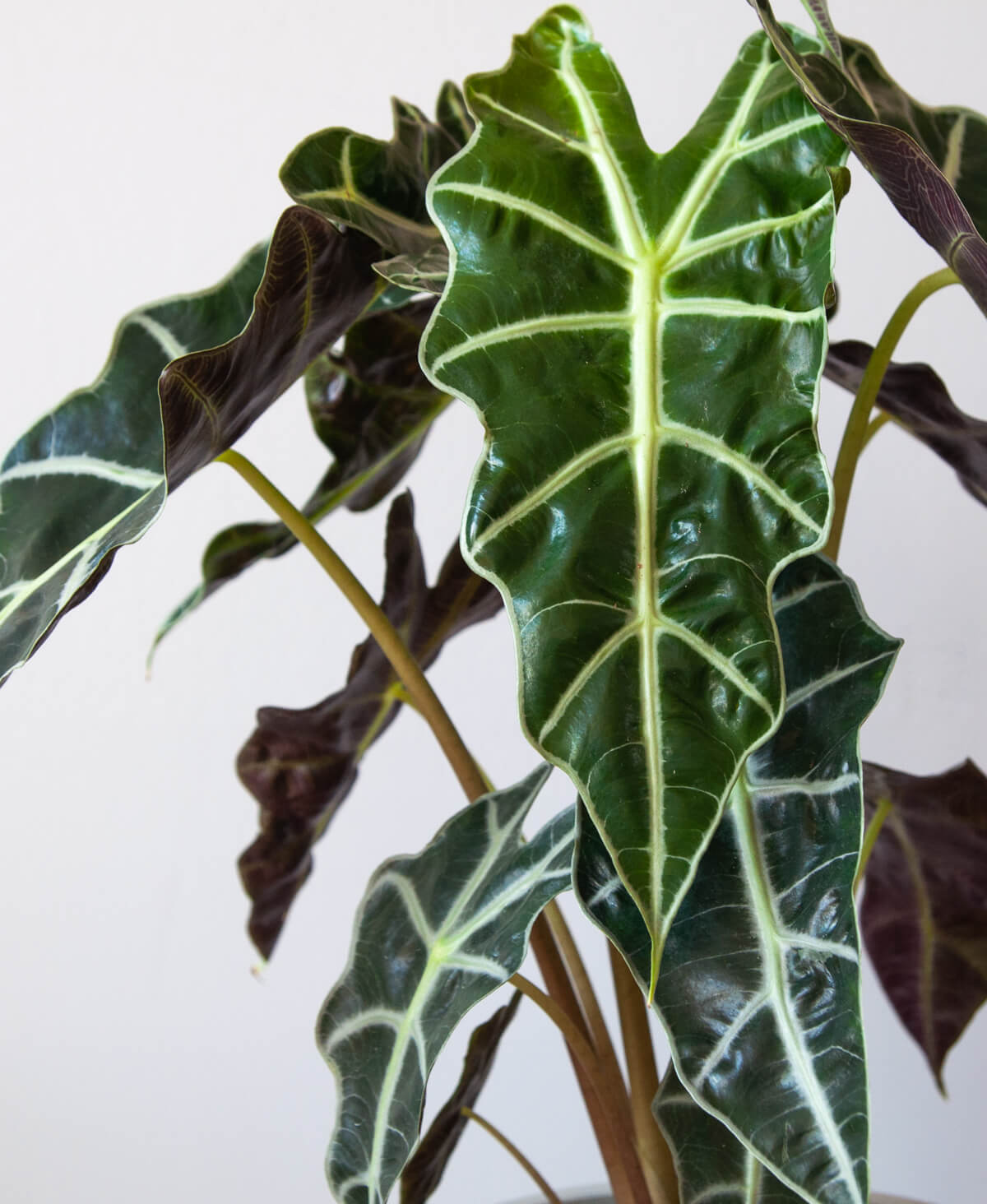As an indoor plant enthusiast, I was excited to add an Alocasia California to my collection. Its lush green leaves with striking white veins looked absolutely gorgeous For a while, my plant thrived, showing off its beautiful foliage But then, I started noticing some of the leaves turning yellow.
At first, I panicked, worried that my precious new plant was dying. But after doing some research and troubleshooting, I realized yellow leaves are a common problem with Alocasia Californias, with several potential causes. The key is pinpointing the specific reason behind the yellowing so you can take the right steps to restore your plant to health.
Here are the most common causes of yellowing leaves in Alocasia California plants and what to do about them
Overwatering
This is one of the most frequent culprits for yellow Alocasia leaves. These tropical plants prefer moist but not soggy soil. If the soil stays constantly wet, the roots can’t get oxygen. This leads to root rot and stressed plants.
Check the soil moisture before watering. Allow the top few inches to dry out slightly between waterings. If you suspect overwatering, hold off on watering for a while. Gently remove the plant from its pot and inspect the roots – healthy roots should be white and firm. Brown, mushy roots indicate overwatering.
Underwatering
While Alocasias don’t like wet feet, they also don’t like totally dry soil. If the soil dries out too much between waterings, the plant can become dehydrated. This stress can cause the leaves to yellow and crisp up.
Check the soil before watering and water thoroughly whenever the top inch or two of soil is dry. Use your finger to check moisture if unsure. Make sure the plant is getting adequate water to prevent underwatering issues.
Improper Lighting
Like many indoor plants, Alocasias need the right amount of light. Too little light can cause yellowing leaves. But direct hot sunlight will scorch the leaves, also turning them yellow.
Place your Alocasia in bright indirect light, near an east or west facing window is ideal. Use sheer curtains to filter intense afternoon sun. Rotate the plant periodically so all sides get light exposure. If the leaves are still yellowing, try a grow light to provide extra illumination.
Temperature Fluctuations
As tropicals, Alocasias prefer consistent warm temperatures between 65-85°F. If exposed to colder or rapidly fluctuating hot and cold temperatures, the leaves can yellow in response to stress.
Keep your plant in the warmest spot in your home and maintain as steady a temperature as possible. Move it away from drafty windows/doors and heating/AC vents. A portable heater or plant heating pad can provide extra warmth on cold nights.
Low Humidity
Another tropical plant requirement is high humidity. Dry indoor air can cause the leaf edges and tips to turn brown and yellow as moisture evaporates faster than the roots uptake.
Boost humidity by misting your Alocasia daily or setting a humidifier nearby. Put the pot on a pebble tray filled with water. Group plants together to create a mini greenhouse effect. Move your Alocasia to your most humid room like the bathroom or kitchen.
Nutrient Deficiencies
If your Alocasia isn’t getting enough of certain nutrients, the leaves can start to yellow. Nitrogen, magnesium, and sulfur deficiencies most often cause yellowing.
Use a balanced liquid fertilizer every 2-4 weeks during spring and summer to prevent nutrient deficiencies. Check that the soil pH is in the ideal range of 5.5-6.5. Add supplements like Epsom salts or calcium magnesium supplement if you suspect a magnesium deficiency.
Pests
Spider mites, mealybugs, aphids and other common houseplant pests can all suck sap from the leaves, causing yellowing or stippling damage. Check closely under leaves and at the stem joints for any signs of bugs.
Isolate any infested plants. Wipe pests away with a cotton swab dipped in alcohol. Use insecticidal soap or neem oil sprays to kill any remaining bugs. Be vigilant about checking for pests and treating promptly before they spread.
Diseases
Fungal or bacterial diseases like leaf spot and root rot can cause yellowing. Overwatering and high humidity often create the right environment for these plant diseases to take hold.
Improve air circulation and space plants out more to prevent diseases. Remove any diseased leaves immediately and treat with a fungicide. Never reuse pots or soil from infected plants without fully sanitizing.
By figuring out what is causing your Alocasia to yellow, you can pinpoint solutions to restore it to vibrant good health. I was able to rescue my plant from its yellow leaf woes through more attentive care and tweaks to its environment. With a little time and TLC, your Alocasia can make a full comeback too!

The leaves on your Alocasia could be turning yellow for a number of reasons. Let’s investigate and get to the bottom of this!

Moisture
The most common cause of yellowing leaves among Alocasia plants is improper soil moisture–in particular, overwatering. Your Alocasia likes to be kept damp (but not wet or saturated!), so keeping a regular watering schedule is key. You’ll want to water your Alocasia when 25-50% of the soil volume is dry.
Make sure you provide enough water so that liquid flows from the drainage hole at the bottom of the pot and into the saucer. It’s extremely important to discard any excess water in the saucer and not to let your plant sit in any standing water. Your plant doesn’t like “wet feet,” which will cause the roots to rot and lead to the eventual death of the plant. Yellow and browning leaves are the first sign that root rot may be occurring.
Providing proper and consistent soil moisture is important in caring for your Alocasia plant. Alternating between bone dry and wet soil from ill-timed waterings can create stress and cause your plant to yellow. This is not a drought-tolerant plant.
Your humidity level
Low humidity and dry soil cause leaves to droop and brown on their edges, later followed by entire yellowing, browning, and shriveling. Your Alocasia will appreciate a boost in humidity from regular misting, a humidifier, or pebble tray.
Improper Light
Alocasia plants grow best when placed in bright indirect sunlight, but they will tolerate medium light. When exposed to direct sunlight for too long, the foliage will burn. While Alocasia Plants can adapt to medium light areas, their growth may slow. If placed in very low light, yellow leaves may develop. If you aren’t sure you have the right light for your plant, try using a Grow Light.
Pests
A weakened or stressed Alocasia is more susceptible to insect infestations. Sap-sucking bugs like spider mites can drain your plant of moisture. This problem quickly manifests itself by yellowing leaflets and fronds. Scale, mealybugs, and spider mites occur frequently in indoor conditions. If not killed early on, these small pests proliferate and move all along frond parts into nooks and crannies. The piercing mouths of the insects exhaust your plant and accelerate yellowing, especially if your Alocasia is already unhealthy from poor lighting, a nutrient deficiency, or improper soil moisture.
Some yellowing is natural
Is your Alocasia producing new growth? If there is new growth on your plant and the yellowing leaves are older, particularly at the bottom of the plant, this yellowing is natural. Your plant sheds its old leaves and sends energy to new growth.
Why Alocasia leaves turning yellow ? / ( Alocasia plant care ) บอน สี
FAQ
What to do when Alocasia leaves turn yellow?
How do you fix overwatered Alocasia?
What mineral is lacking when a plant leaves turn yellow?
What is the solution for yellow leaves in plants?
